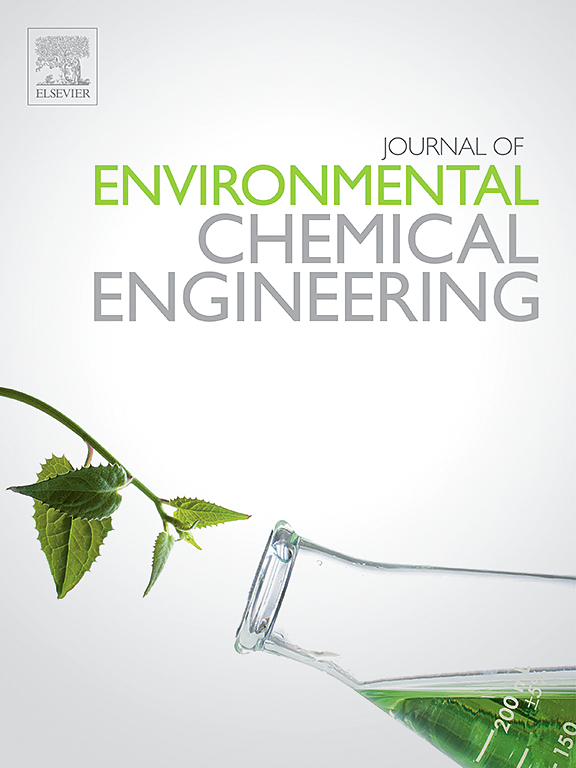A comprehensive review of critical factors affecting green ammonia synthesis by electrochemical process
IF 7.4
2区 工程技术
Q1 ENGINEERING, CHEMICAL
引用次数: 0
Abstract
Ammonia, such as ammonium sulfate and urea, is crucial for fertilizers and the chemical industry in reducing agents and refrigerants. Additionally, ammonia is a promising carbon-free fuel due to its safety and established transportation and storage methods. The Haber-Bosch process, the primary method for ammonia synthesis, is energy-intensive and emits significant greenhouse gases. This process involves the reaction of nitrogen and hydrogen over a catalyst at high temperatures and pressures. With global carbon reduction goals for 2050, renewable energy sources like wind and solar are gaining importance. Therefore, the electrochemical synthesis of 'green ammonia' using renewable energy is a vital research direction.
This article undertook a meticulous analysis of 1298 journal documents related to ammonia synthesis, sifting through them to identify 172 relevant articles. Key terms such as electrochemical, ammonia synthesis, catalyst, electrode, and green ammonia were meticulously identified using NVivo tools. The research delves into the intricacies of electrochemical nitrogen reduction reaction (eNRR) pathways, nitrogen and hydrogen sources, temperature conditions, catalysts, electrodes, and electrolytes. By conducting a comprehensive comparison of the energy consumption and carbon emissions of various green ammonia synthesis processes, the study aims to pinpoint the optimal parameters for mainstream green ammonia synthesis, thereby providing a robust reference for future developments.
影响电化学绿色合成氨工艺的关键因素综述
氨,如硫酸铵和尿素,对化肥和化学工业中的还原剂和制冷剂至关重要。此外,由于氨的安全性以及成熟的运输和储存方法,氨还是一种很有前途的无碳燃料。哈伯-博施工艺是合成氨的主要方法,但该工艺需要大量能源,并排放大量温室气体。该工艺涉及氮气和氢气在催化剂作用下进行高温高压反应。随着 2050 年全球碳减排目标的实现,风能和太阳能等可再生能源正变得越来越重要。因此,利用可再生能源电化学合成 "绿色氨 "是一个重要的研究方向。本文对 1298 篇与氨合成相关的期刊文献进行了细致分析,筛选出 172 篇相关文章。使用 NVivo 工具对电化学、氨合成、催化剂、电极和绿色氨等关键术语进行了细致的识别。研究深入探讨了电化学氮还原反应(eNRR)途径、氮源和氢源、温度条件、催化剂、电极和电解质的复杂性。通过对各种绿色合成氨工艺的能耗和碳排放进行全面比较,该研究旨在找出主流绿色合成氨工艺的最佳参数,从而为未来的发展提供有力的参考。
本文章由计算机程序翻译,如有差异,请以英文原文为准。
求助全文
约1分钟内获得全文
求助全文
来源期刊

Journal of Environmental Chemical Engineering
Environmental Science-Pollution
CiteScore
11.40
自引率
6.50%
发文量
2017
审稿时长
27 days
期刊介绍:
The Journal of Environmental Chemical Engineering (JECE) serves as a platform for the dissemination of original and innovative research focusing on the advancement of environmentally-friendly, sustainable technologies. JECE emphasizes the transition towards a carbon-neutral circular economy and a self-sufficient bio-based economy. Topics covered include soil, water, wastewater, and air decontamination; pollution monitoring, prevention, and control; advanced analytics, sensors, impact and risk assessment methodologies in environmental chemical engineering; resource recovery (water, nutrients, materials, energy); industrial ecology; valorization of waste streams; waste management (including e-waste); climate-water-energy-food nexus; novel materials for environmental, chemical, and energy applications; sustainability and environmental safety; water digitalization, water data science, and machine learning; process integration and intensification; recent developments in green chemistry for synthesis, catalysis, and energy; and original research on contaminants of emerging concern, persistent chemicals, and priority substances, including microplastics, nanoplastics, nanomaterials, micropollutants, antimicrobial resistance genes, and emerging pathogens (viruses, bacteria, parasites) of environmental significance.
 求助内容:
求助内容: 应助结果提醒方式:
应助结果提醒方式:


